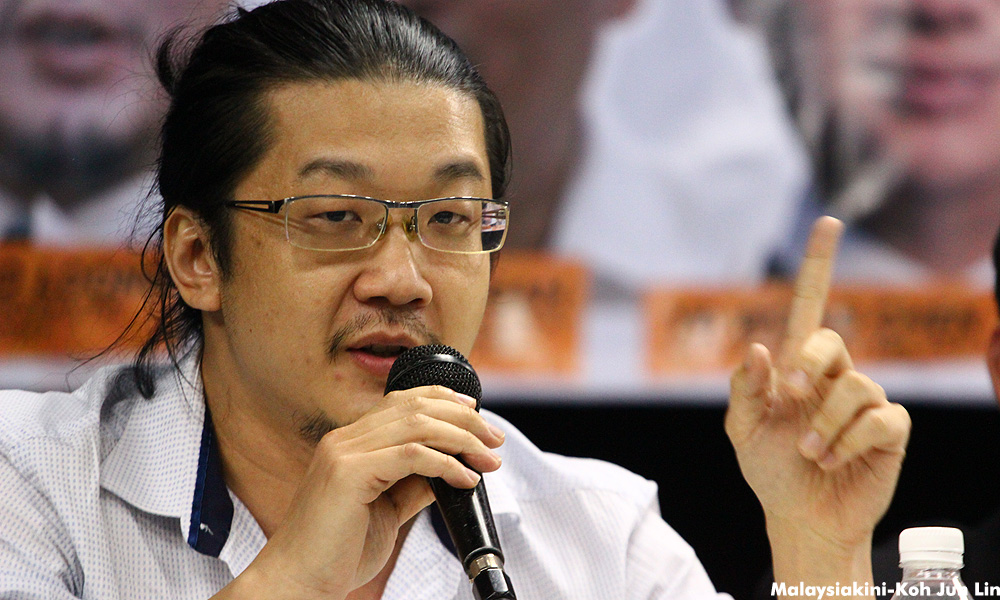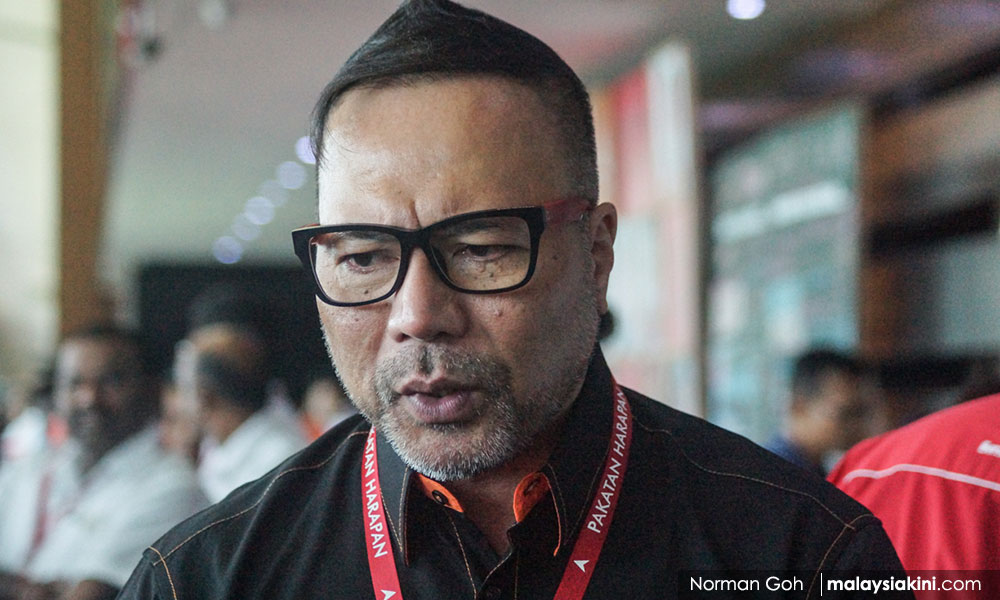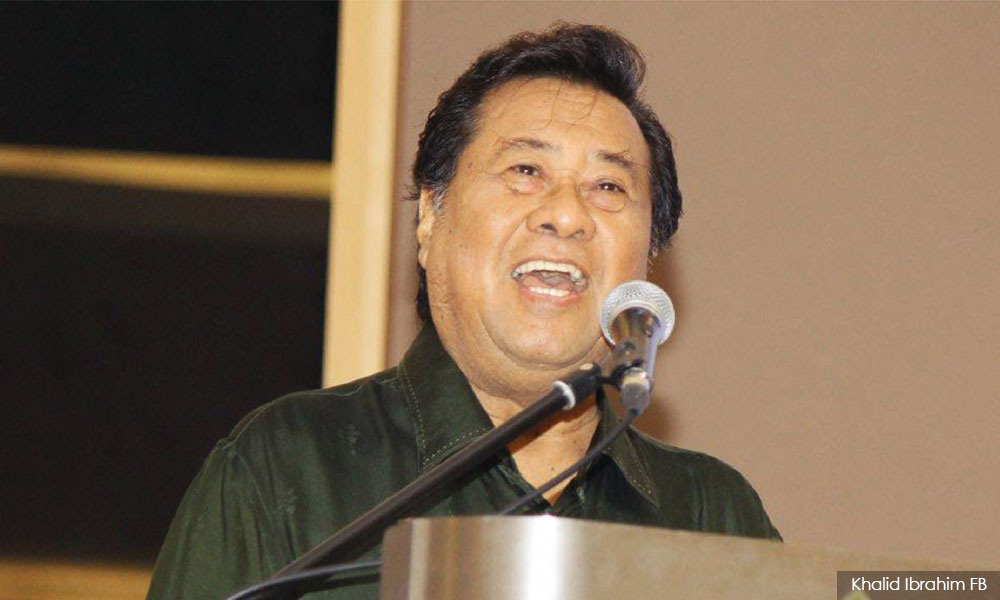
Although Selangor Menteri Besar Mohamed Azmin Ali has maintained an elegant silence over the allegations on the RM1.18 billion Ijok land scandal raised by BN Strategic Communications (BNSC) director Abdul Rahman Dahlan a week ago, various aides to the MB have responded.
These include Azmin's strategic communications director Yin Shao Loong, the MB's political secretary Shuhaimi Shafiei and the Parliament Coordinator for Kuala Selangor, Dr Dzulkefly Ahmad from Amanah.
However, their answers make little sense and merely seem to be weak attempts at a cover-up.
For example, Shao Loong (photo below) calls the two private companies as crony companies which have failed to deliver. However, he then goes on to defend that the Selangor government had to give back the land to these two failed crony companies.

Similarly, Shuhaimi also called the two companies "BN cronies" but said the decision for the state government to give up the Federal Court case and settle with the companies is a win-win situation for all.
So, if both Shao Loong and Shuhaimi said they are BN cronies dating to the Dr Mahathir (Mohamad)-era of the year 1998-2000, why then did the Selangor government bail-out the "BN cronies" that had failed, and now allow them to win - and in fact, "win" much more than the settlers?
More shocking is the statement from Amanah's Dzulkefly, who detailed out that the RM1.18 billion was divided as follows - compensation to the 981 settler families (RM300 million), bank payments and creditors (RM670 million) and retained by the two companies (RM210 million).
Dzulkefly's figures showed that BNSC's calculations of RM421 million given to the settlers were too generous, since only RM300 million out of the RM1.18 billion went to the settlers, while the remaining RM880 million went to the two "crony companies" to settle their outstanding bank loans, creditors and for them retain a bonus of RM210 million for themselves.
This means that out of the effective price of RM12.34 per square feet (psf) paid for the settlers' land by the public company to the two "crony" companies, of which Mahathir loyalist Khairuddin Abu Hassan (photo) was once the executive director, the settlers themselves were only paid a price of RM3.12psf for their land, while the two companies pocketed the rest.

In their haste to try and blame BN for their scandal, the three persons have also neglected to state that it was the previous BN government that had given the land to the settlers.
This is a point that they should acknowledge.
Nevertheless, the three gentlemen's weak attempt at explanation actually opens up even more questions, such as:
a) Do you think it is fair that the settlers were compensated at a rate of only RM3.12psf for their land - a price that would have been the market price 18 years ago - given that the listed company paid RM12.34psf to the two "crony" companies and given that agriculture land in the Ijok region are now being listed for sale at between RM30psf to RM65psf?
b) If you say they are crony companies from the Mahathir era, why did you still bail them out with RM810 million out of the RM1.18 billion?
c) What would have been the price if the state government had sold the land via an open tender instead?
d) The listed company had publicly announced that its property project on the land will have a gross development value (GDV) of at least RM15 billion. Wouldn't it better if the Selangor government had followed the model that Khalid Ibrahim (photo) had previously planned, which is for the state to develop the land itself, or in a joint venture with developers, so that the profits can be used to benefit the settlers and the state government?

If the reason for Azmin's settlement was to ensure the settlers got their compensation quicker, shouldn't the state government have used part of its RM3 billion reserves to pay the RM300 million directly to the settlers?
At the same time, the state government could have gone on to fight the Federal Court case to keep the land it had seized from the two companies under Khalid's time - seeing that the state government had already won at the High Court and Court of Appeal.
The state government could then sell the land to the listed company directly for RM1.18 billion and retain the RM810 million for itself, instead of benefiting the two companies.
Or it could have practised transparency by selling the land via an open tender so that it could fetch a higher price.
The three individuals also vaguely mentioned that the state government could have ended up owing the banks "hundreds of millions". Can either of them specify how did the state government end up being liable for loans taken from the bank by the two private companies, and exactly how much the "hundreds of millions" is?
If the land was forfeited based on breaches of the National Land Code by the two private companies, shouldn't it be free of encumbrances?
It is also noted that in the written judgments for both the High Court and Court of Appeal cases, there is no mention that the Selangor government is judged to be liable for the bank loans taken by two private "crony" companies.
In the interest of transparency, can the Selangor government reveal their final settlement agreement with the two private companies?
ERIC SEE-TO is the deputy director of the Barisan Nasional Strategic Communications Team.- Mkini


No comments:
Post a Comment
Note: Only a member of this blog may post a comment.